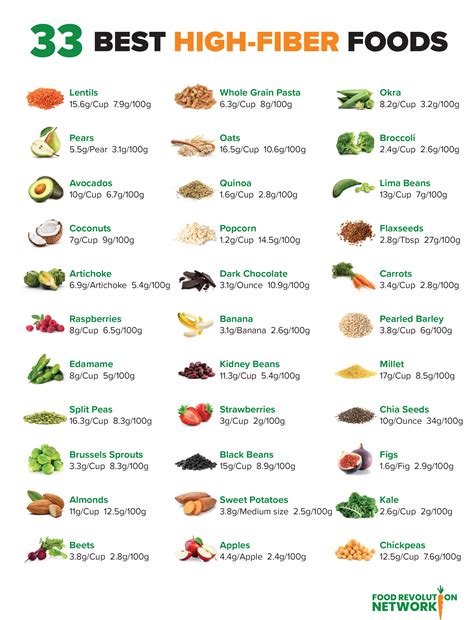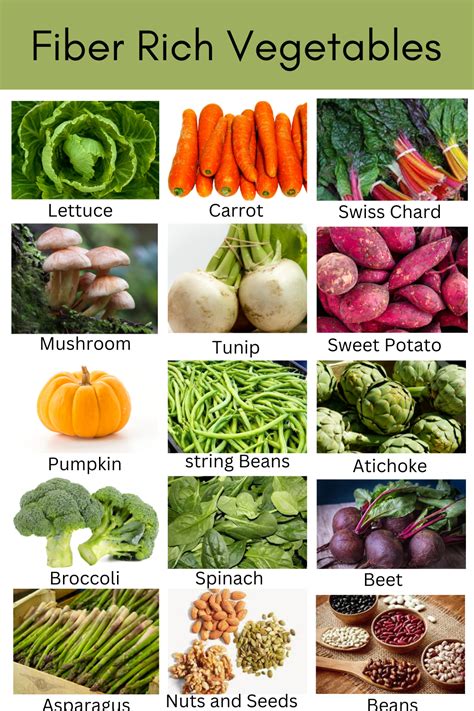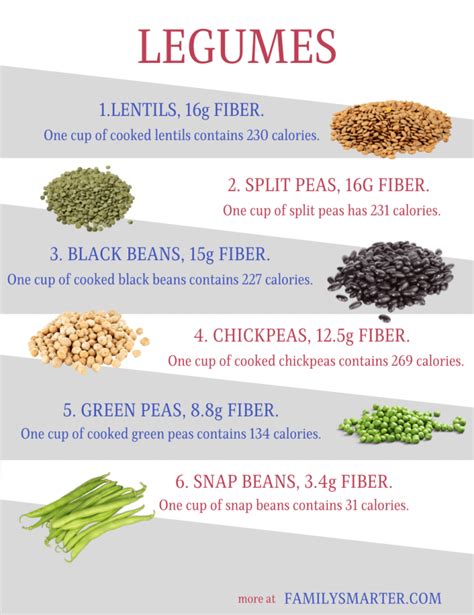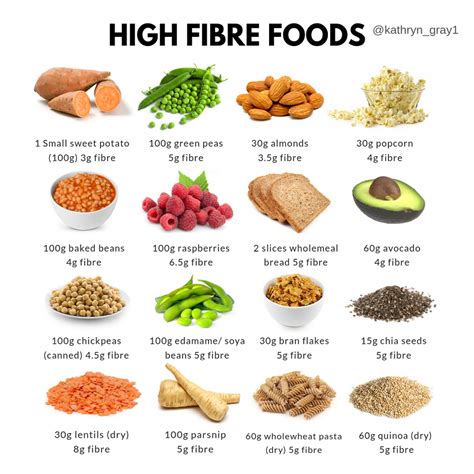Intro
Boost digestive health with the best sources of dietary fiber, including whole foods, fruits, and vegetables, rich in soluble and insoluble fiber, supporting healthy gut bacteria and promoting regular bowel movements.
Dietary fiber is a crucial component of a healthy diet, playing a significant role in maintaining digestive health, promoting satiety, and supporting healthy blood sugar levels. Despite its importance, many individuals fail to consume the recommended daily intake of dietary fiber, which can lead to a range of health problems, including constipation, diverticulitis, and an increased risk of chronic diseases such as heart disease and diabetes. In this article, we will explore the best sources of dietary fiber, highlighting the importance of incorporating these foods into your diet to reap the numerous health benefits associated with a high-fiber diet.
A high-fiber diet has been shown to have numerous health benefits, including promoting regular bowel movements, preventing constipation, and supporting healthy blood sugar levels. Fiber can also help to lower cholesterol levels, reduce inflammation, and even aid in weight management. With so many benefits associated with a high-fiber diet, it's essential to know which foods are rich in dietary fiber and how to incorporate them into your daily meals. From fruits and vegetables to whole grains and legumes, there are numerous delicious and nutritious sources of dietary fiber to explore.
Incorporating high-fiber foods into your diet can be easier than you think, and with a little creativity, you can add a boost of fiber to your meals and snacks. Whether you're looking to support digestive health, manage blood sugar levels, or simply feel fuller for longer, dietary fiber is an essential nutrient that can help you achieve your health goals. With the numerous health benefits associated with a high-fiber diet, it's no wonder that health professionals and nutritionists recommend consuming a variety of whole, unprocessed foods to reap the rewards of a diet rich in dietary fiber.
Introduction to Dietary Fiber

Benefits of Dietary Fiber
The benefits of dietary fiber are numerous, and incorporating high-fiber foods into your diet can have a significant impact on overall health and wellbeing. Some of the key benefits of dietary fiber include: * Promoting regular bowel movements and preventing constipation * Supporting healthy blood sugar levels and reducing the risk of developing type 2 diabetes * Lowering cholesterol levels and reducing the risk of heart disease * Aiding in weight management and promoting feelings of fullness * Supporting healthy gut bacteria and boosting the immune systemBest Sources of Dietary Fiber

High-Fiber Fruits
Fruits are a tasty and convenient way to boost your fiber intake, with many varieties providing a significant amount of dietary fiber per serving. Some of the highest-fiber fruits include: * Apples: 1 medium apple contains 4.5 grams of fiber * Bananas: 1 medium banana contains 3.1 grams of fiber * Berries: 1 cup of mixed berries contains 3.8 grams of fiber * Citrus fruits: 1 medium orange contains 2.9 grams of fiberVegetables and Fiber

Whole Grains and Fiber
Whole grains are a rich source of dietary fiber, with many varieties providing a significant amount of fiber per serving. Some of the highest-fiber whole grains include: * Brown rice: 1 cup of cooked brown rice contains 3.5 grams of fiber * Quinoa: 1 cup of cooked quinoa contains 5.2 grams of fiber * Whole wheat bread: 1 slice of whole wheat bread contains 3.8 grams of fiber * Whole grain pasta: 1 cup of cooked whole grain pasta contains 4.2 grams of fiberLegumes and Fiber

Nuts and Seeds and Fiber
Nuts and seeds are a tasty and convenient way to boost your fiber intake, with many varieties providing a significant amount of dietary fiber per serving. Some of the highest-fiber nuts and seeds include: * Almonds: 1 ounce of almonds contains 3.5 grams of fiber * Chia seeds: 1 ounce of chia seeds contains 10.6 grams of fiber * Flaxseeds: 1 ounce of flaxseeds contains 7.7 grams of fiber * Pumpkin seeds: 1 ounce of pumpkin seeds contains 2.5 grams of fiberIncorporating Fiber into Your Diet

Conclusion and Next Steps
In conclusion, dietary fiber is a crucial component of a healthy diet, playing a significant role in maintaining digestive health, promoting satiety, and supporting healthy blood sugar levels. By incorporating high-fiber foods into your diet, you can reap the numerous health benefits associated with a high-fiber diet. Whether you're looking to support digestive health, manage blood sugar levels, or simply feel fuller for longer, dietary fiber is an essential nutrient that can help you achieve your health goals.What is dietary fiber?
+Dietary fiber, also known as roughage, is the indigestible part of plant-based foods that passes through the digestive system relatively intact.
What are the benefits of dietary fiber?
+The benefits of dietary fiber include promoting regular bowel movements, supporting healthy blood sugar levels, lowering cholesterol levels, and aiding in weight management.
What are some high-fiber foods?
+High-fiber foods include fruits, vegetables, whole grains, legumes, and nuts and seeds. Some examples of high-fiber foods include apples, broccoli, brown rice, lentils, and almonds.
We hope this article has provided you with a comprehensive understanding of the importance of dietary fiber and the best sources of dietary fiber. Remember to incorporate a variety of high-fiber foods into your diet to reap the numerous health benefits associated with a high-fiber diet. If you have any questions or comments, please don't hesitate to reach out. Share this article with your friends and family to help them understand the importance of dietary fiber, and don't forget to subscribe to our newsletter for more health and wellness tips.
